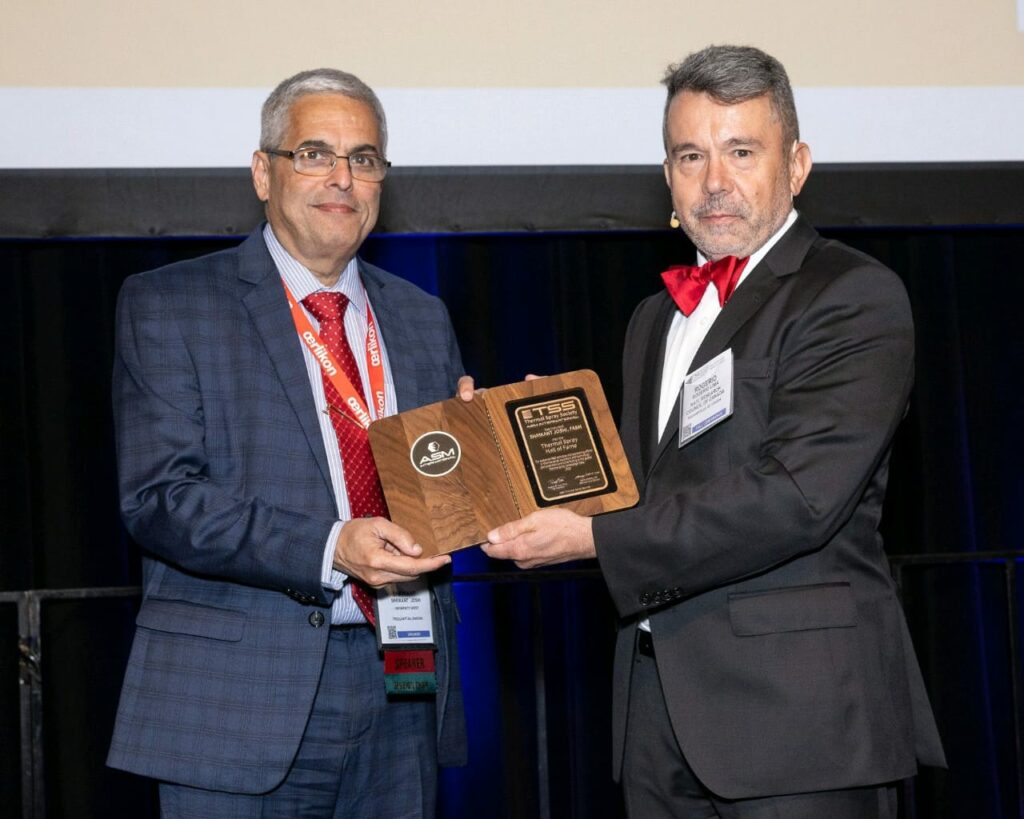
Prof Shrikant Joshi, a noted technologist has been honoured with induction into the ‘2023 Thermal Spray Hall of Fame’ by the International Thermal Spray Society for his outstanding contributions to the field at its Conference held during May 22-25 in Quebec City, Canada
The 1977 batch alumnus of the Hyderabad Public School (HPS) Begumpet, at present with the University West in Sweden, joins a growing list of alumni who have distinguished themselves in India and globally.
The TSS Hall of Fame, established in 1993 is a means of recognising and honouring outstanding leaders who have made significant contributions to the science, technology, practice, education, management and advancement of Thermal Spraying.
For the HPS Begumpet, celebrating its Centenary in 2023, the achievement of Shrikant Joshi adds another feather to its cap. Known previously as the Jagirdar School the HPS, Begumpet boasts of illustrious alumni, which includes, Satya Nadella, CEO of Microsoft, Ajay Banga, President, World Bank, Shantanu Narayen, President & CEO of Adobe, Syed Akbaruddin, former Ambassador to the UN, Nagarjuna, Tollywood star, Kiran Kumar Reddy and YS Jagan Mohan Reddy, former and present CM of AP, Asaduddin Owaisi, Chief of MIM to many more.
A low profile Technologist

The soft-spoken, tall and passionate researcher, Shrikant Joshi is a Professor of the production technologies Center, Dept. of Engineering Science, University West, Trollhattan, Sweden since 2015. He has been teaching and guiding many students in the areas of spray technology, which has wide applications in surface coatings of materials. His wife, Rashmi Joshi is a noted painter, who holds an exhibition of her works in the Scandinavian country.
In his acceptance speech at the Event in Quebec City, Prof Shrikant said “There are awards and there are awards – but this is clearly top-of-the-heap for me, mainly because I am familiar with the illustrious list of individuals who have stood here before me. They have all been role models whom I looked up to while I was getting started on my thermal spray journey or peers whom I greatly admire. Therefore, it is hugely humbling that my nominators and the TSS Board found me worthy of joining this stellar list.”
Before moving to Sweden, Shrikant was the Addl. Director of the ARCI (International Centre for Advanced Research in Powder Technology), Hyderabad. During his tenure for over a decade with the Institute, which had many technologies from the erstwhile Soviet Union, he played a key role in transfer of technologies to industry, facing challenges as well as developing indigenous ones.
One of the noted technologies was the use of the D-Gun (Detonation Gun), a device used in the thermal spraying process for providing, wear-resistant and dense-microstructure coatings. The Gun is capable of depositing a variety of materials and ceramic coatings at supersonic speed onto the surfaces.
He took a break from ARCI in 2008 to help the University of Hyderabad to establish a new school. As the Dean, School of Engineering Sciences and Technology, UoH, he got an M Tech programme underway, formalised linkages for the school with various research institutions, got faculty posts sanctioned and laid the foundation for procurement of equipment for lab, etc.
Shrikant did his B Tech in Chemical Technology from Osmania University, MS from the Rensselaer Polytechnic Institute, and PhD from the University of Idaho in 1987. He returned to Hyderabad and joined the Defence Metallurgical Research Laboratory (DMRL) in 1989. In 2001, he moved to the newly established ARCI, funded by the Department of Science and Technology, which offered him more scope for his work.
Lasers, Applications & Patel
On a personal note, I recall Shrikant’s help in briefing me about the legendary Dr C K Patel, lasers and getting to interview him at an International conference in Hyderabad during the early 2000s. The ARCI had established a Carbon dioxide Laser facility.
During the interview, I learned how Dr Patel, working at the famous Bell Labs of AT& T had invented and developed the potential of the carbon dioxide laser. The Chief of the AT & T wanted to see the laser in action. During the demo, something went wrong and the laser beam cut the tie worn by the Chief. Dr Patel was worried. But, the Chief appreciated it and walked away after the experiment. The next day, he found the sliced tie, neatly framed and adorning the wall in the Chief’s office. Much to the relief of Patel.
The carbon dioxide (CO2) laser, invented by India-born, C K Patel is one of the most widely used in industry for cutting and welding, as a laser scalpel in surgery, and in laser skin resurfacing etc. the ARCI, was amongst the first in India to import and establish it as an exclusive facility with funding from the DST, whose Secretary, Dr P Rama Rao was responsible to choose the Hyderabad Institute.
Contributions and current research
Dr Shrikant has over 30 years of work in thermal spray technologies. His current research interests span the areas of Additive Manufacturing (AM) and Surface Engineering. His team at the University West is connected with a strong network of industrial partners like GKN, Siemens, Sandvik, etc.
Recalling his career Prof Shrikant says in his LinkedIn Post, “For me, my mind rewinds almost instantaneously to 1987 when I had just wrapped up my Ph D at University of Idaho and was headed back home to India. At that moment, I could have bet my last penny that my love affair with thermal plasmas was coming to an abrupt and premature end. Little did I know then that the stars would align in a fascinating manner and would actually grant me unbelievable freedom (and funding) back in India to do pretty much what I pleased in a thermal spray for 25 long years and which has continued in the last 7 years after I moved to Sweden.
